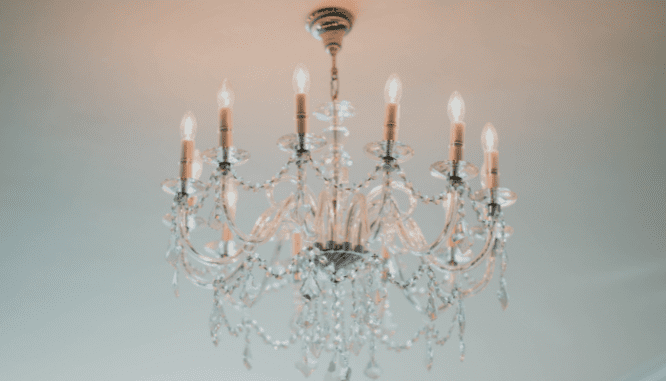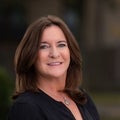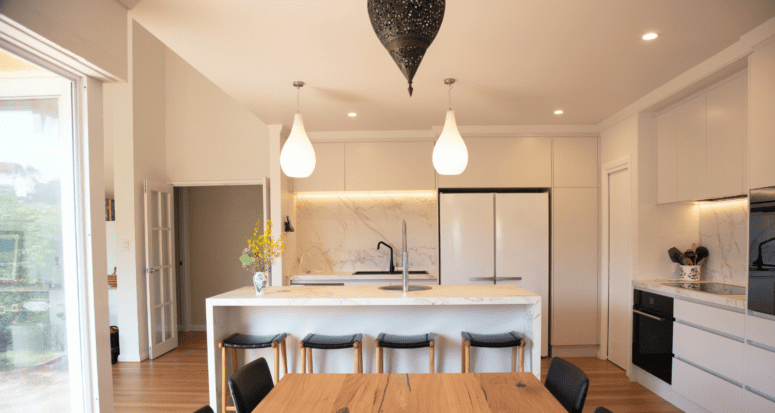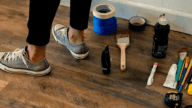What is Considered a Fixture When Selling a House?
- Published on
- 9 min read
-
 Jennifer Schmidt, Contributing AuthorClose
Jennifer Schmidt, Contributing AuthorClose Jennifer Schmidt Contributing Author
Jennifer Schmidt Contributing AuthorJennifer Schmidt is a freelance writer based in Vancouver, Washington, who specializes in real estate, human resources, and technology. When not writing, you’ll find her scanning real estate listings for the latest housing trends and decorating ideas.
-
 Richard Haddad, Executive EditorClose
Richard Haddad, Executive EditorClose Richard Haddad Executive Editor
Richard Haddad Executive EditorRichard Haddad is the executive editor of HomeLight.com. He works with an experienced content team that oversees the company’s blog featuring in-depth articles about the home buying and selling process, homeownership news, home care and design tips, and related real estate trends. Previously, he served as an editor and content producer for World Company, Gannett, and Western News & Info, where he also served as news director and director of internet operations.
A dining room chandelier — the crown jewel of your home — convinced potential buyers to write an offer because they fell in love with it.
Hey, wait a minute!
You’re only selling the house, not the chandelier, and don’t want to leave your treasured heirloom behind. But, if it’s considered a fixture when selling a house, the buyer could be correct in thinking your gem should glisten over their future family dinners.
We have done extensive research and interviewed top real estate agents Deana Corrigan from Doylestown, Pennsylvania, and Colleen Toner from Lynn, Massachusetts, about fixtures. Corrigan and Toner are both top-rated home sales experts, working with over 75% more single-family homes than the average agent in their areas. Both agreed to share their expertise in determining what a fixture is, and all the things a seller should know before opening their home to potential buyers.

What is a fixture?
A fixture is typically defined as an object that is physically attached to real property that would require tools to remove it. The way this item is attached is usually with nails, screws, bolts, adhesive, pipes or cement. A fixture is intended to become part of the property and not easily detached.
For example, a dishwasher that’s built into your kitchen cabinet would be considered a fixture. Compared to a portable dishwasher that moves freely and would be personal property that can roll off to your next home. For outdoor landscaping, trees that are physically planted into the ground are considered fixtures. Compared to potted plants that could be carried out without digging them up.
Sometimes there are gray areas if an object qualifies as a fixture or not, such as a wall-mounted television. Because part of the TV bracket is physically mounted to the studs, but the television itself is held by other parts of that bracket extending from the wall. Corrigan explains, that is why TV brackets will often stay with the house, and the television itself will be removed. Unless the seller decides to include both items as part of the sale.
The legal definition and the five tests of a fixture
In most cases, legally, a fixture is personal property that is attached to real property and becomes a fixture. How this is determined varies in each state and is usually spelled out in the purchase agreement.
“As a listing agent, we have to prepare a multiple listing service informational sheet once the property is on the market. And at that time is when all buyers and buyers agents assume, or have the understanding, that a fixture is anything that is built in or attached. In our purchase and sales agreement, there’s also a paragraph that specifies fixtures,” Toner explains.
MARIA is an acronym that is often on real estate exams and referenced by many agents in helping to determine if an item is a fixture or not. The five tests below are useful in helping to clarify each situation.
M – Method of attachment: How is your fixture attached to the property? If tools are needed to attach the item to the property, then it’s typically considered a fixture.
A – Adaptability: Is the fixture an integral part of the property? For instance, a toilet that is bolted to the floor and not easily removed is expected to stay as part of the house.
R – Relationship of the parties: What is the relationship of the parties for this transaction? In a buyer/seller relationship this would usually mean the buyer expects fixtures that are attached to be included in the sale. As opposed to a landlord/tenant relationship, when a tenant installs a shelf, it typically goes with them, and the landlord doesn’t expect it to stay as part of the property.
I – Intention: When the object was originally attached, was it supposed to be temporary or permanent? If the intention for the item was to be permanent, then it would usually be considered a fixture.
A – Agreement: Does the buyer and seller state the object is a fixture in their agreement? If both agree the item is a fixture, then it’s generally considered one.

What are the most common fixture misunderstandings?
- Chandeliers – attached to the ceiling, but the seller added it after purchasing their home and considers it a personal item
- Storage sheds – attached to the property but removed since it’s in the back yard and not inside the house
- Wood stoves – freestanding source of heat that was purchased by the seller as an addition to their fireplace
What are the most common examples of fixtures? (Real property) – attached
- Curtain rods – attached to the wall
- Light fixtures – wired in and mounted to the ceiling
- Towel racks – affixed to the wall
What things are not considered a fixture? (Personal property) – unattached
- Bookshelves – a unit that stands against the wall but isn’t attached to it
- Curtains – the fabric that hangs from the curtain rod and can easily be removed
- Wall-mounted TV – the TV itself is not affixed directly to the wall
What things can go either way? (Attached or unattached)
- Fountains – if the fountain is freestanding it could be removed. If it’s attached to the ground, then it would usually stay.
- Refrigerator – when a refrigerator is physically built into the kitchen, then it would typically stay. If it’s a self-contained appliance that can be moved, then it tends to go.
- Security system – if the cameras are affixed directly to the house, they could be considered a fixture. If they’re held in place by brackets, then they could possibly be removed.
What if you want to keep your fixture?
Corrigan says that if a seller wants to keep their chandelier or other item that is considered a fixture, she recommends removing and replacing it with something else prior to putting the house on the market.
“What I basically tell them is anything they want to take that’s attached, take it down now, so no one sees it,” says Corrigan.
By doing this, the buyer won’t be expecting a particular fixture to be part of the sale. Corrigan also cautions sellers not to take everything nailed down and really consider what’s important to them. Because you don’t want to remove all the best features of your house and make it harder to sell.
Also, if you decide to take certain items and it leaves a big hole (e.g., no wood stove and only the ceiling pipe remains), the buyers might hesitate to submit an offer, knowing they have to buy a replacement.
Considerations when removing a fixture
Corrigan explains that if a seller wants to take a particular fixture, it should also be detached with care and not obvious that it used to be there. Otherwise, the buyer could ask for an entire room to be painted to match the touch-up paint from a TV bracket that was removed.
Another example is when a seller takes something unexpected, and prompts the buyer to request a replacement due to the damage left behind.
“They’ll take, say, the door knocker off the front door because they like it, and now you’ve got a door that’s got this big hole, and people are like, well, now you have to buy me a new front door.”
Also, while appliances like refrigerators, that are freestanding, could be removed, stoves are often left behind because some loans require that a stove be included with the house.
Excluding items is another way for sellers to keep their fixtures
If you don’t want to strap on your tool belt and remove your chandelier prior to the sale, then Corrigan recommends having an exclusion list as part of your agreement. This list includes every fixture that will be removed from the house so the buyer knows what stays with the home prior to making their offer.
In one example, Corrigan explains how a seller removed their $12,000 storage shed prior to the final walkthrough because they didn’t remember it wasn’t excluded and weren’t supposed to take it.
“Most of them haven’t sold a home in twenty years, and so they don’t know how things have changed. In the old days, this wasn’t such a big deal, but today it is. We have seller’s disclosures that we fill out; we have a lot to go through with them, so they do even forget when we go through it. A lot of them will say, oh, I didn’t remember that.”
Some sellers think that buyers would really love the blue paint that they had on their dining room wall or that they could use their rakes that were in the shed. But at the walkthrough, if the buyer does not want those, then the seller is asked to have the cleanup crew come back and remove that or do a credit, and then the buyer takes care of it.
 Colleen Toner Real Estate AgentClose
Colleen Toner Real Estate AgentClose Colleen Toner Real Estate Agent at Toner Real Estate
Colleen Toner Real Estate Agent at Toner Real Estate
- Years of Experience 39
- Transactions 703
- Average Price Point $373k
- Single Family Homes 505
How fixture disputes are settled
When both the buyer and seller are expecting to keep the same item, and the written agreement isn’t followed, that could halt the deal, and negotiations are often done at the table to resolve the issue.
“It gets, you know, ridiculous when you’re talking about a $500,000 home, and they’re arguing over a light fixture. But normally, they’ll figure it out, maybe say, okay, we’ll take a thousand dollars less for the home, and we want to keep that fixture,” says Corrigan.
Sometimes not removing a fixture, such as heating oil, could also be a costly mistake for the seller. In Pennsylvania, whatever fuel is left behind with the house is considered free at the time of settlement. Corrigan explains that even when $1,000 worth of oil is left in a fuel tank, if the seller fails to remove it in time, it becomes the buyer’s oil, and they aren’t legally obligated to reimburse the seller.
Also, sellers can’t randomly decide to leave non-fixtures behind and shouldn’t assume the buyer will want to keep them.
“Some sellers think that buyers would really love the blue paint that they had on their dining room wall or that they could use their rakes that were in the shed. But at the walkthrough, if the buyer does not want those, then the seller is asked to have the cleanup crew come back and remove that or do a credit, and then the buyer takes care of it,” says Toner.
If the buyer has to pay someone to remove unwanted items, they could ultimately take the seller to small claims court to get reimbursed. But according to Toner, it doesn’t escalate to that level and usually gets resolved amicably.
Toner also explains that sellers who didn’t realize they weren’t supposed to take a particular fixture will often correct the issue by either returning the item, providing a substitution or giving the buyer a credit. The credit essentially discounts the buyer’s closing costs by the value amount of the missing fixture.
Key takeaways for understanding fixtures
Now that you know all the ins and outs of fixtures, you’re more prepared to move your chandelier with confidence and avoid the common pitfalls. Remember to carefully read your agreement, choose your fixtures wisely, and be cautious when removing them. One of the best ways to ensure a smooth transition is to partner with a top agent who can help you sell your home.
Header Image Source: (Simona Sergi / Unsplash)


